Best rim brake pads for road bikes 2025: better braking performance no matter the weather for carbon and alloy rims
If your road bike has caliper rim brakes, you'll want to fit the best rim brake pads to up your stopping power, increase your confidence and ultimately make you faster
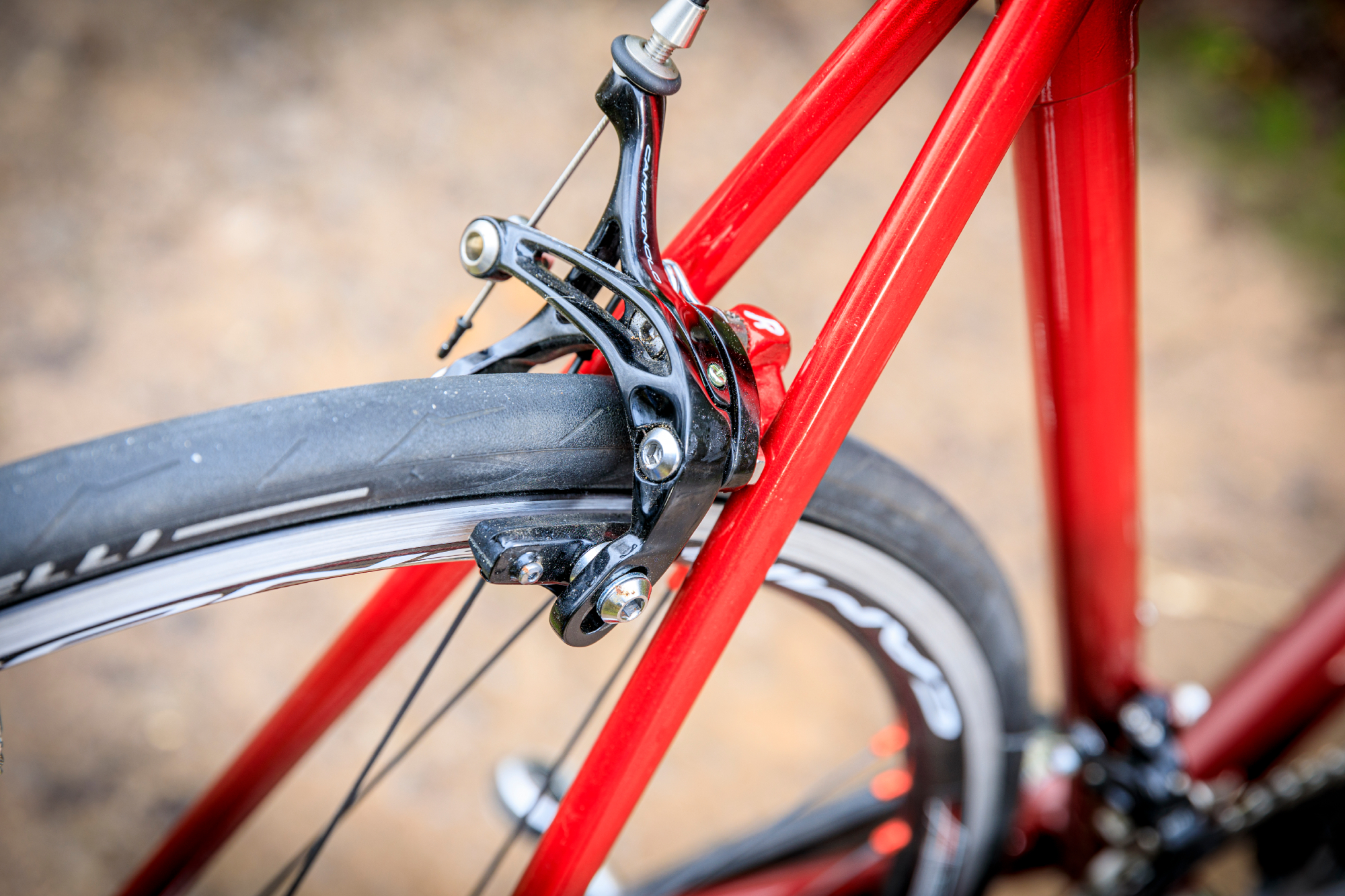
Along with the best road tyres, high-quality brake pads are a cheap and surefire way to increase the safety and performance of your budget road bike or older high-end bike. With the correct compound for the conditions, their transformative effect could see you increasing your speed rather than decreasing it.
Rim brake pads are categorised into two distinct types: those designed for aluminium road bike rims and those for carbon fibre road bike wheels which is reflected in how we have laid out this guide.
Brake pads designed for aluminium rim brake bikes are generally a lot stickier and more durable, due to the low wear and heat transfer that aluminium rims offer. Pads like our best for wet weather stopping, the Kool-Stop R7 Dura 2 can offer stopping power close to that of some disc brakes when set up properly.
Carbon Fibre-specific options like our best overall Shimano Dura-Ace inserts have to offer much better heat management to avoid transferring heat into the Carbon rim. This tends to make carbon rim brake pads softer and less durable than their aluminium counterparts but helps keep performance high.
If you have a disc brake-equipped bike check out our guide to the best brake pads for road and gravel bikes.
The Quick List
For Alloy Rims
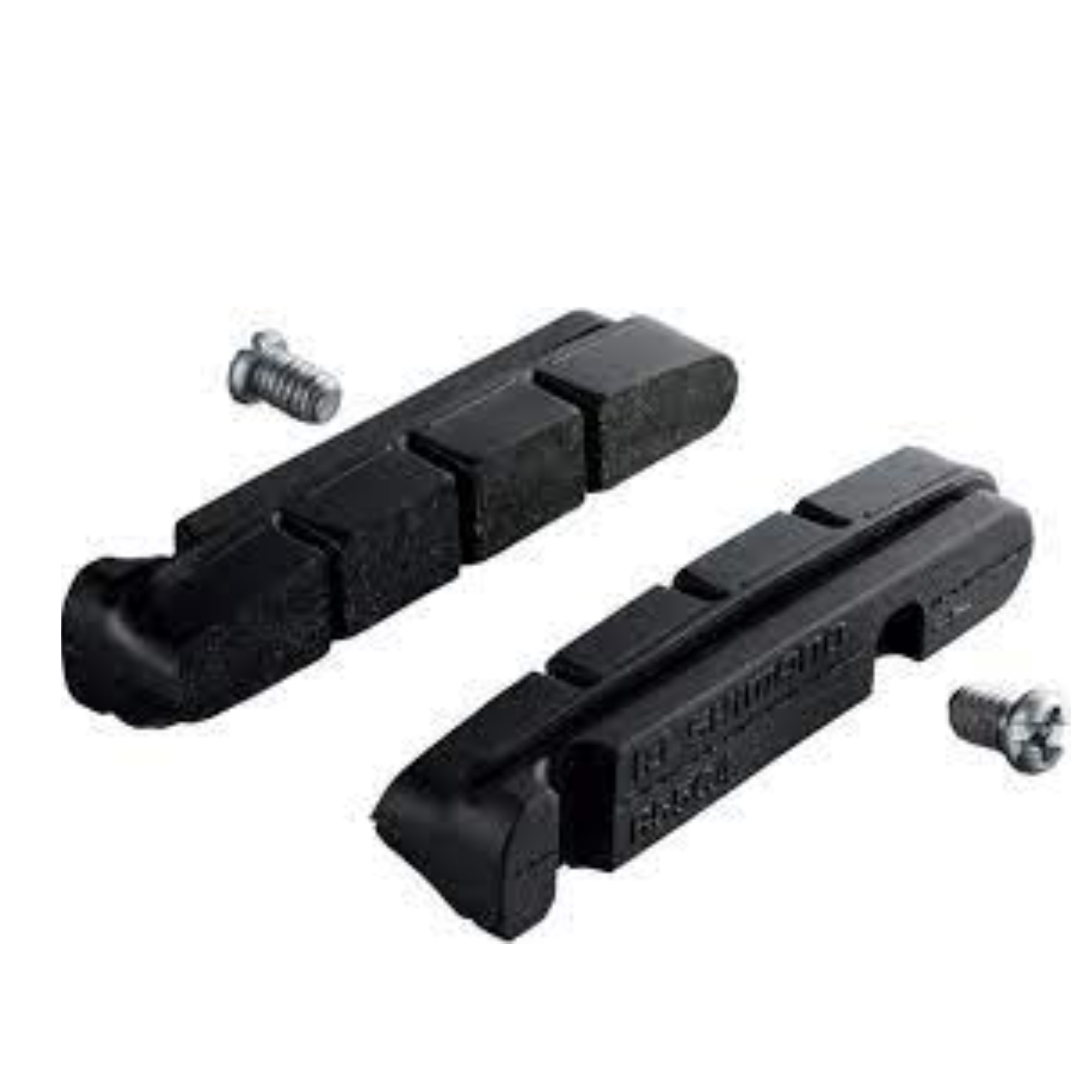
Best overall for alloy rims
Created to work in both wet and dry conditions, the Dura-Ace pads are also compatible with SRAM road calipers.

Best for wet weather stopping on alloy rims
Uses a softer compound designed for improved grip in wet conditions.

Most Durable for alloy rims
The original black compound in the thicker-than-usual Pro design makes for hardy pads.
For Carbon rims
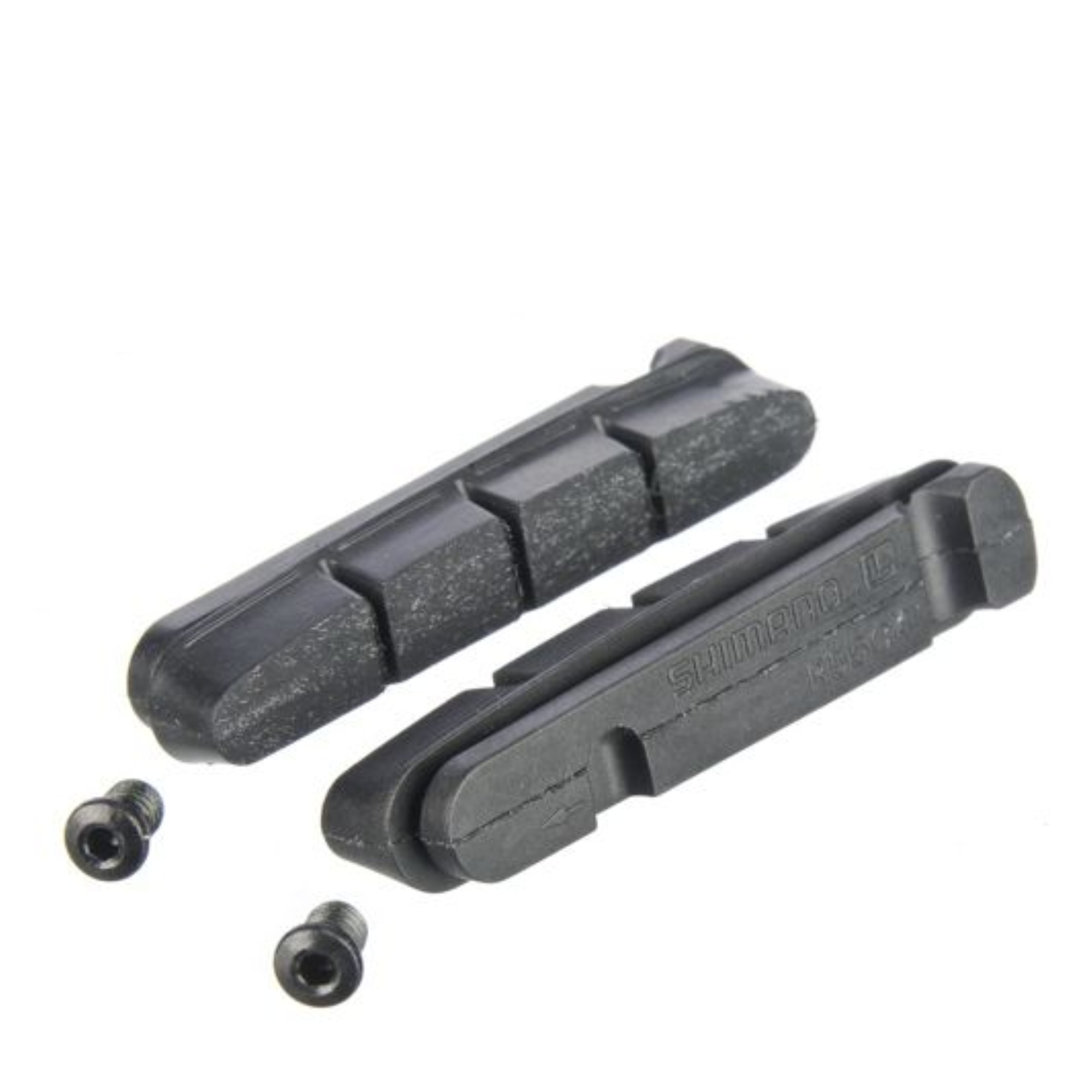
Best overall for stopping on carbon rims
Like their alloy rim counterpart, these are both affordable and adept in both the dry and the wet.

Best for wet weather riding with Carbon rims
Featuring a design that removes dirt and water before the pad hits the rim, these are good for when the weather turns bad.
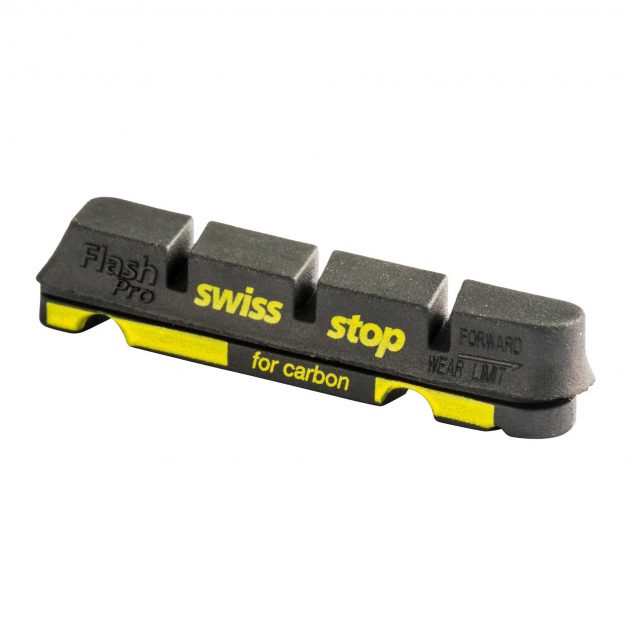
Best modulation for carbon fibre rims
plenty of power with a little extra control, the black prince is the go-to pad for those who want to keep the bike moving not stop it dead.
Best brake pads for alloy rims
Best overall for alloy rims

Shimano Dura-Ace brake shoes
Specifications
Reasons to buy
Reasons to avoid
This is one of the more economical ways to get Dura-Ace components on your bike. If you are going to have top-of-the-range parts anywhere on your bike, the part that controls your speed is probably the best place for it.
These are versatile pads that are designed to offer powerful and consistent braking in both the dry and the wet - although according to Shimano's own characteristics graph, there is a marked difference between performance in the dry (scored a 5) and in the wet (scored a 2). Durability is good and as brake pads go they are easy to fit and pretty silent in all but the wettest conditions.
The pads are only compatible with Shimano or SRAM brake shoes.
Best for wet weather
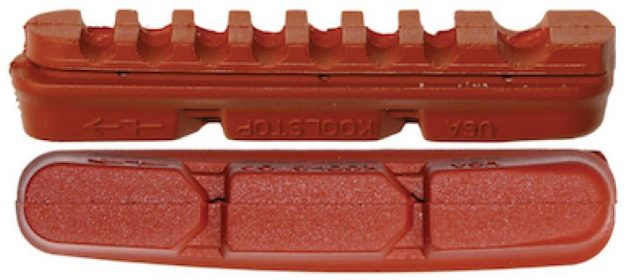
Kool-Stop Salmon Dura 2
Specifications
Reasons to buy
Reasons to avoid
These pads, designed for "extreme all weather conditions", have something of a cult following for how well they perform in the wet. The soft compound is super grippy, although that does mean they wear faster than other pads.
Arguably, this is not much of a problem. In being quite soft they are easy on the braking track, meaning that you’ll get more life out of your rims. Swapping pads a little more frequently is cheaper - and a lot easier - than rebuilding your wheels.
The Dura 2 is a thicker version of this pad, so even considering the wear rate, you won’t actually have to replace them that often. Other Dura compounds include black for dry riding and triple for "superb braking in all conditions".
Most durable for alloy rims

SwissStop Flash Pro Black
Specifications
Reasons to buy
Reasons to avoid
SwissStop's nomenclature for their pads takes a second to get your head round, but it makes sense once you know it.
If the name has “flash” in it, the pad is good for SRAM/Shimano, if it has “race” instead then the pad is suitable for Campagnolo. “Pro” means that the pad is thicker for a longer service life. Alternatively, there is “evo” which is good if you have particularly wide rims which can only really accept pads once they are half worn.
For alloy rims, you then have the choice of the “Original Black” compound or “BXP”. The Original Black is recommended for general use and performs better in dry conditions. If you're after a SwissStop pad for wet weather, then its BXP compound is what you'll need.
Best brake pads for carbon rims

Shimano Dura-Ace Inserts for Carbon Rims
Specifications
Reasons to buy
Reasons to avoid
The fact that the Dura-Ace pads are used widely by the top cycling teams should speak to their quality, even if they are supplied for free!
Designed to work across conditions, these are solid all rounder, which should deliver assured braking performance in a range of conditions. However, as you might expect Shimano's characteristics chart shows that they do perform slightly better in the dry compared to the wet.
Expect good durability and a fairly quiet ride, even in damp conditions.
Best Overall for Carbon rims
Best for adverse weather
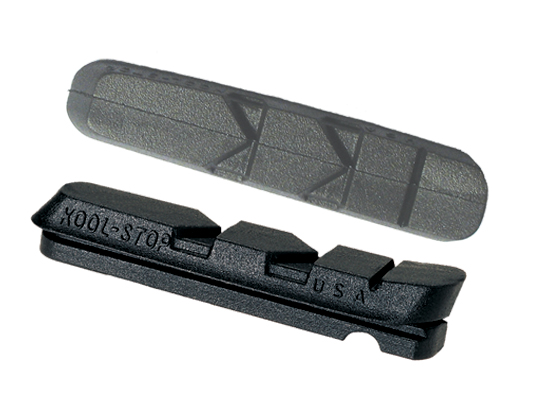
Kool-Stop R4 Dura Carbon
Specifications
Reasons to buy
Reasons to avoid
The R4 Dura featured a plow-tip design which helps remove dirt and water before the pad touches the rim. It makes these a good choice if you use your carbon rims year-round or live in a region where rain is often on the horizon.
As a USA brand, they can be a little difficult to get hold of if you're in the UK, but a definitely worth the extra effort if your looking for a pad that can help your braking performance in less than ideal weather conditions.
Best modulation

Swissstop Flash Pro Black Prince
Specifications
Reasons to buy
Reasons to avoid
As with the alloy pads, the “flash” means these are for SRAM/Shimano and “pro” means the pad is thick. For carbon rims, there are two compounds to choose from, “Black Prince” and “Yellow King”. Yellow King provides a little more in terms of absolute stopping power - but what is power without control?
Although the Black Prince compound might not induce the same stomach-flipping raw deceleration as the Yellow King, it does offer superior modulation. This allows you to really get the most out of your brakes.
You’re able to get right up to (but not exceed) the limits of your tires’ grip - that precise point before the wheels lock up and the tires start to skid - where you’re exerting the maximum braking force possible for the conditions.
Best for Campagnolo users
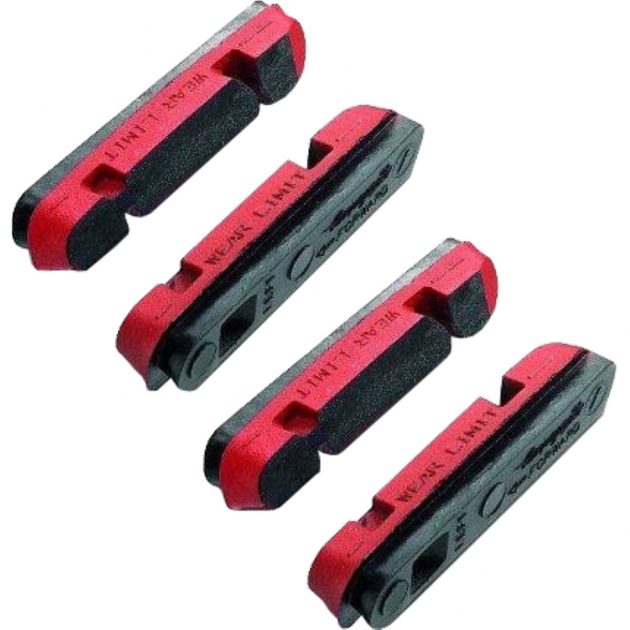
Campagnolo Carbon Caliper Inserts
Specifications
Reasons to buy
Reasons to avoid
These deliver the strong and consistent stopping power you would expect from top-flight Campagnolo pads. If you're riding vintage Campy rim brakes you'll need to look elsewhere however as these are only compatible with calipers produced from the year 2000 onwards.
Perhaps surprisingly Campagnolo also produce a SRAM/Shimano version of these pads as well - so that those on the dark side can enjoy superb braking on carbon rims as well.
How we test rim brake pads
Cycling Weekly has a dedicated team of testers that every year put in thousands of hours testing a wide range of cycling products to bring you honest, unbiased reviews.
Brake pads are no different and while caliper brakes have become less relevant, plenty of the Cycling Weekly team are still rolling on rim brakes. They put in the hours through all weathers, to test the best compounds and value options.
A typical brake pad test would first look at overall compatibility and fitting, this is important as there is a wide range of mechanical abilities and caliper sizes to contend with. Bedding in and initial performance are a big part of how long-term a brake pad might perform and heavily weights our reviews. Finally, we of course are testing long-term through a variety of conditions to gauge the longevity of a pad and determine its overall performance
Frequently asked questions about rim brake pads
What is the difference between carbon and alloy rim pads?
Carbon rims and aluminium alloy rims require different brake pads. For carbon rims especially, it is very important that the correct pads are used.
Carbon isn’t as good as aluminium at conducting heat, meaning that carbon rims have a greater tendency to heat up. If the rims get too hot, you risk starting to melt the resin that holds the carbon fibres together and causing your inner tubes to pop, or even a failure of the rim itself, although modern carbon rims usually use high iTg resins to make them more resistant to heat build-up.
Brake pads designed specifically for carbon rims are constructed to help control the amount of heat build up by sucking it away from the rim. It's important to use your brakes properly though to stop the rims heating up. Dragging your brakes on long descents is to be avoided.
Can I use carbon rim pads of alloy rims and vias versa?
Carbon-specific brake pads shouldn’t be used on aluminium rims because they are quite soft and will wear quickly. Also, if the pads are used on aluminium rims, little bits of metal from the braking track will embed themselves in the pads. If the pads are then used on carbon rims, the metal shards will abrade the carbon and damage the rims.
Equally, alloy rim pads might cause damage to the carbon rim but it's most likely they just won't work and you are likely to have a crash.
Are all rim brake pads compatible?
Not always, as already mentioned pads required for alloy rims and carbon rims are very different and shouldn't be used on the incorrect material. There are also compatibility issues across models and manufacturers like the age-old Shimano vs Campagnolo fitting.
Make sure to check exactly what you have before making a purchase, if you are unsure, you can always purchase new shoes and cartridges to ensure compatibility with your caliper.
Should I buy Cartridge vs blocks
Some brake pads come as a single brake block, whereas with others the brake pad functions as a cartridge that is inserted into a brake shoe.
A cartridge system is stiffer because the brake shoe provides extra support for the pad, making the brakes more powerful and responsive. They have the added benefit that when it comes to changing the pads, you can just pop the old pads out and slide the new ones in. You don’t need to readjust the brake position. They're the best choice for serious riding.
One-piece pads are cheaper to manufacture and so are often specced on lower-value bikes or bikes that are trying hard to come in below a certain price point. The brakes tend to feel a little mushier and the pads tend to be made from lower performing compounds to keep the costs down.
Whats the difference between Compounds
A softer compound will be more grippy and offer better braking - especially in the wet. However, because the compound is softer, it will wear faster than a harder compound. On the bright side, a soft compound is easier on the rims, meaning they’ll last longer before you have to replace them.
A super soft compound might work well in the wet, but it can be a little too grabby in the dry. Using a mixed compound, or one that is designed for the dry, will improve the brake’s modulation. It's therefore easier to control the amount of braking power you’re exerting, so you don’t accidentally lock up a wheel.
How do you know if your brake pads need replacing?
On all rim brake pads, there will be an indicator, this may be embossed or stamped into the pad as a clear line or marker not to pass. For some pads, this could be as simple as if all the raised pad blocks have been worn down flush with the main body.
The latest race content, interviews, features, reviews and expert buying guides, direct to your inbox!
Like many, Matt began his bicycle industry journey on the spanners at his local bike shop. After spending his youth mountain biking, he was inspired to embrace gravel during his tenure with Evans Cycles' in-house brands, Pinnacle and Hoy Bikes. Recognising the evolving industry, Matt eagerly seized the chance to become an E-bike designer, winning several awards with the E-bike brand Cairn Cycles.
These days, Matt is likely to have a toddler sitting shotgun or off the beaten track somewhere on the South Downs.